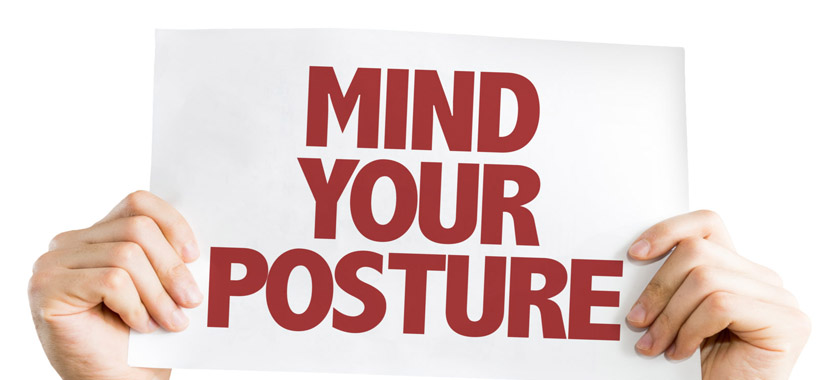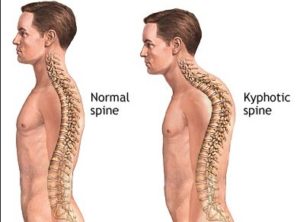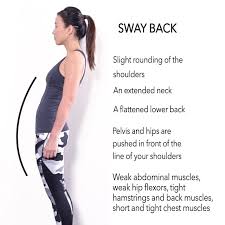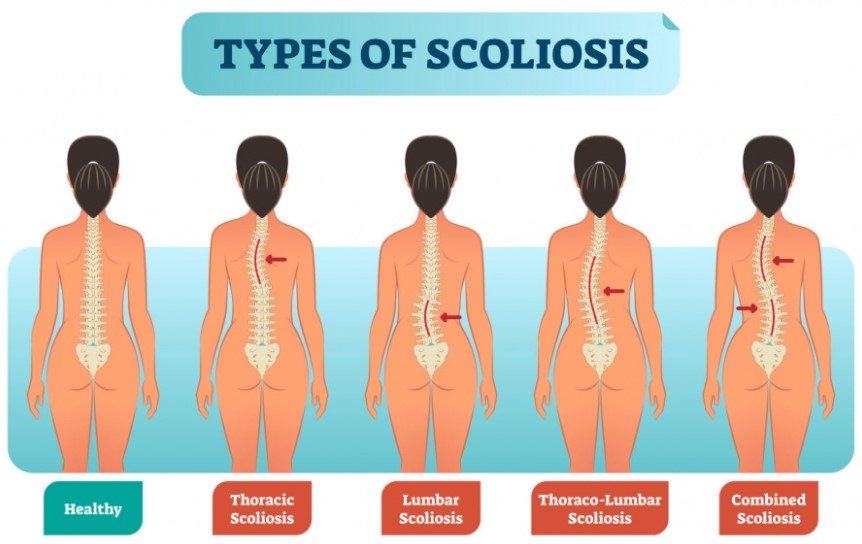The Different Types Of Bad Posture

If you’ve ever seen someone walk, sit or even stand in an awkward manner then you understand what “poor posture” means. Unknown to many, poor posture affects more than just your appearance while standing up or sitting down. You spine dictates your physical and mental well-being and once it’s out of line, it can lead to bigger problems than just laziness and discomfort.
There are many reasons why people have bad posture. It could be as a result of compensations that occurred due to disease or after old injuries. For others, such problems could be inborn. In most cases, not having good posture could be due to the position you take as part of your lifestyle or occupation.
Here is an in-depth look at the different examples of bad posture.
Kyphosis

This is the most common type of bad sitting posture. In this posture you stand with your upper back curved, your head down and your shoulder leaning forward. This posture is common for people who spend plenty of time in front of a computer on a daily basis.
This posture puts a lot of pressure on your back and neck which leads to weak muscles in your upper back and abdomen. This is what causes back pain and discomfort because it weakens the muscles designed to help you stand or sit in the right posture. The solution to this problem is to avoid hunching when working. Also, you should position your monitor at eyesight so that you don’t have to look down.
Sway Back
 Swayback, also known as hyperlordosis, is the reverse of kyphosis (hunchback), is characterized by an exaggerated curve at the lower back.This posture puts a lot of weight on the midsection and is common for individuals who spend a lot of time standing. This posture unevenly distributes weight on your spine and other joints and this cause stress and strain which end up causing pain.
Swayback, also known as hyperlordosis, is the reverse of kyphosis (hunchback), is characterized by an exaggerated curve at the lower back.This posture puts a lot of weight on the midsection and is common for individuals who spend a lot of time standing. This posture unevenly distributes weight on your spine and other joints and this cause stress and strain which end up causing pain.
The best way to correct this posture is to strengthen the abdominal muscles and stretches with chiropractic care.
Scoliosis
Scoliosis is the sideways curvature or abnormal twisting of the spine. Someone with this posture might also have uneven hip height or shoulder. There are two main types of scoliosis “idiopathic” and “congenital.” Those who have congenital scoliosis have abnormalities with the ribcage section such as concave depression or hump.

Idiopathic scoliosis often results from sitting on one hip with the leg on the side for long until the spine adapts to the position. This is also a common posture for those in the production line as they constantly have to twist or lean in one direction. Learning how to sit on a chair with scoliosis can help rehabilitate this condition.
Pelvic Malalignment
This is one of the types of bad posture that manifests in different ways in accordance to the underlying cause that are specific to an individual. The pelvic height on those with this posture will be lower on one side than the other. It could also be that the pelvic has tilted forward on one side or that the entire pelvis may have rotated horizontally.
Medially Rotated Arms
This posture is characterized with the back of the hands facing forward and the arms rotated inwards. Your weight plays a part on the angle of the arms. For instance, if you are overweight and try to put your shoulder in the right position your body will get in the way.
The shoulder blades spread apart and this makes the arm appear rotated. Subscapularis & Teres Major, Latissimus Dorsi, and Pectoralis Major are possibly shortened muscles in this posture while Infraspinatus&Teres Minor is possibly lengthened muscles.
This guide has explored the different types of postural defects and some of their common traits. This information should help you get the help you need to correct the defect.


![Good Posture for Bassists [Best Posture for Playing Bass]](https://www.goodposturehq.com/wp-content/uploads/thumbs_dir/Good-Posture-for-Bassists-prlo9r28a7kjuccnls4l0ln7wus4y8khcjvamosmhg.jpeg)
![Good Posture When You Draw [How to Get the Best Position]](https://www.goodposturehq.com/wp-content/uploads/thumbs_dir/Good-Posture-When-You-Draw-prlnpziekmihpj280qk0337a867a3d3oaq0qc83nbo.jpeg)
![Driving Posture Support [How to Achieve a Good Driving Position]](https://www.goodposturehq.com/wp-content/uploads/thumbs_dir/Driving-Posture-Support-prlmshjh06nlxtpymr9nq1iw2tbcrp420x0rm7rr2s.jpeg)
![Safest Driving Position [And Comfy for Long Trips]](https://www.goodposturehq.com/wp-content/uploads/thumbs_dir/Safest-Driving-Position-prlllxejk8e89fjh5czrts5jsr32925ku9nbd6vgt0.jpeg)